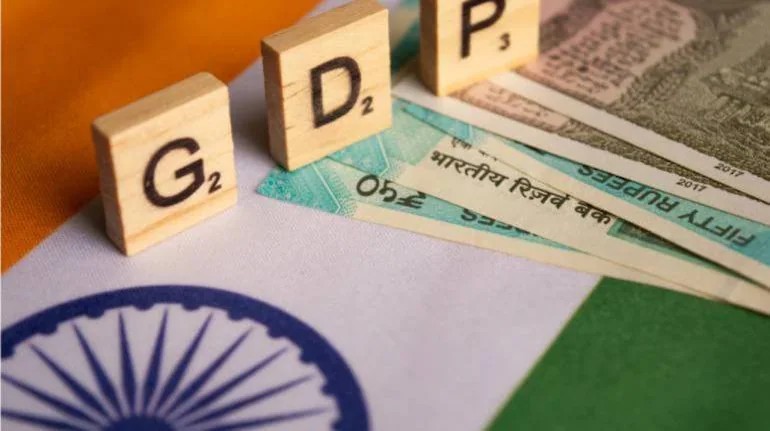INDIA’S GDP RISE MASKS PER CAPITA REALITY
INDIA’S GDP RISE MASKS PER CAPITA REALITY
Syllabus:
GS-3:
Monetary Policy , Fiscal Policy , Growth & Development
Focus:
The International Monetary Fund (IMF) has projected that India will surpass Japan in 2025 to become the fourth-largest economy in the world by absolute GDP. While this milestone signals strong economic momentum, it conceals ground-level disparities in income, health, education, and overall development. The editorial critiques this over-reliance on absolute GDP for assessing progress and instead emphasizes per capita and human development indicators for a more comprehensive understanding.
GDP Figures: Context and Limitations
- Absolute Growth: India’s GDP is set to increase from $468.4 billion in 2000 to $4,187 billion in 2025, overtaking Japan in absolute terms.
- Per Capita Gap: Despite the rise, India’s GDP per capita remains 12 times lower than Japan’s, revealing stark disparities.
- Comparative Insight: Countries like Poland, with a much smaller overall GDP, enjoy nine times higher GDP per capita than India.
- Distribution Issues: GDP doesn’t reflect income inequality, regional disparity, or quality of life.
- Misleading Metrics: Relying solely on GDP creates a false sense of progress, overlooking actual citizen well-being.
Employment Patterns: Quantity vs Quality
- Agricultural Dependence: As of 2023, 45% of India’s workforce was still employed in agriculture, compared to less than 10% in Poland and Japan.
- Low Formalization: Only 9% of Indian workers were in formal wage and salaried employment, versus 91% in Japan and 80.1% in Poland.
- Job Quality: A high share of informal employment in India implies lack of social security, contracts, and benefits.
- Sectoral Shift: Advanced economies show a clear transition to industrial and service sectors, which India is yet to fully realize.
- Productivity Lag: Agricultural over-dependence keeps India trapped in low productivity jobs, stalling income growth.
Educational Attainment: Roadblocks to Equity
- Low Enrolment: In 2022, only 7% of Indian youth enrolled in higher education, compared to 65% in Japan and 75% in Poland.
- Access Barriers: Factors like high dropout rates, gender disparity, and lack of infrastructure hinder India’s educational reach.
- Skilling Gap: Limited access to vocational and technical training reduces employability and restricts upward mobility.
- Urban-Rural Divide: Students in rural areas and poorer States continue to face quality and access issues in education.
- Policy Focus: While initiatives like NEP 2020 are promising, implementation gaps persist in bridging educational inequalities.
Health Indicators: Progress with Gaps
- Life Expectancy: As of 2023, average life expectancy in India stood at 72 years, while Japan’s was 84 years and Poland’s 5 years.
- Infant Mortality: India’s Infant Mortality Rate (IMR), though reduced, remains at 24.5, significantly higher than <5 in Poland and Japan.
- Healthcare Access: A large section of India’s population lacks access to quality primary healthcare, especially in rural and tribal areas.
- Spending Deficit: India’s public health expenditure is just around 2% of GDP, far below global averages.
- Preventive Neglect: Inadequate focus on preventive care and nutrition affects maternal and child health outcomes.
Human Development: The Real Measure
- HDI Score: India’s Human Development Index (HDI) in 2023 was 685, categorizing it as a country with medium development.
- Comparative Standing: Japan and Poland both recorded HDIs above 0.9, placing them in the very high development
- Composite Gaps: HDI captures education, life expectancy, and income, all areas where India still lags.
- Gender Inequality: India continues to show a high gender gap in HDI sub-indices, affecting overall progress.
- Inclusive Growth: True development must include marginalized communities, beyond elite-driven economic growth narratives.
Rethinking Progress: Beyond GDP Metrics
- Narrative Challenge: India’s rising global GDP rank should not mask the socioeconomic challenges at home.
- Data Diversity: A well-rounded assessment requires tracking Gini coefficients, unemployment data, and multi-dimensional poverty.
- Policy Realignment: Policymaking should focus on basic services, decentralization, and grassroots inclusion.
- Holistic Governance: Institutions must integrate economic, environmental, and social well-being into planning and evaluation.
- Global Learning: India can learn from Poland’s rapid development model, which combined economic reforms with social investment.
Conclusion
India’s economic ascension to the fourth-largest GDP position is indeed a notable achievement, but it should not distract from the real gaps in human development. Indicators like per capita income, health, education, and employment reveal the unfinished task of inclusive growth. The journey ahead lies in balancing economic expansion with social progress.
Source: TH
Mains Practice Question:
India is set to become the world’s fourth-largest economy by 2025 in absolute GDP terms. Critically examine how this milestone contrasts with indicators of human development, and suggest measures to ensure that economic growth translates into equitable and inclusive development.




